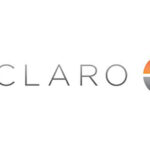WIN Semiconductors Corp has released a high integration mmWave GaAs platform called the PIH1-10. Optimized for 5G front-ends, the PIH1-10 technology combines an advanced 100 GHz ƒt enhancement-mode pHEMT with monolithic PIN and Schottky diodes to provide best in class mmWave performance for all front-end functions. WIN is the first compound semiconductor wafer foundry to commercialize an integrated GaAs platform capable of producing single chip front-ends for 5G handsets and mmWave radio access networks.
The core of PIH1-10 is an E-Mode pHEMT that provides the gain, power density and efficiency for  mmWave transmit power amplifiers, and the noise performance needed in the receive LNA. This versatile single supply transistor can support Tx power levels of 30dBm and Rx noise figure of 2.5 dB at mmWave frequencies. Furthermore, the integrated PIN diode provides excellent mmWave Tx/Rx switch functionality with <1 dB insertion loss, enabling monolithic integration of all front-end functions on a single chip. GaAs technology outperforms BiCMOS in every front-end function, and mmWave single-chip front ends realized in PIH1-10 can reduce array power consumption, simplify thermal management, and extend battery life in 5G user equipment while improving total cost of ownership for mmWave access points.
mmWave transmit power amplifiers, and the noise performance needed in the receive LNA. This versatile single supply transistor can support Tx power levels of 30dBm and Rx noise figure of 2.5 dB at mmWave frequencies. Furthermore, the integrated PIN diode provides excellent mmWave Tx/Rx switch functionality with <1 dB insertion loss, enabling monolithic integration of all front-end functions on a single chip. GaAs technology outperforms BiCMOS in every front-end function, and mmWave single-chip front ends realized in PIH1-10 can reduce array power consumption, simplify thermal management, and extend battery life in 5G user equipment while improving total cost of ownership for mmWave access points.
“The commercial release of PIH-10 provides a new set of integrated GaAs solutions to improve mmWave front end performance. High-efficiency Ka-band GaAs power amplifiers, LNAs and low loss switches on a compact single-chip front-end will enhance the user experience through improved battery life and better 5G mmWave coverage,” said David Danzilio, Senior Vice President of WIN Semiconductors Corp. “Integrated GaAs front-ends can also be used in mmWave access points, and the higher Tx power and efficiency of PIH1-10 enables smaller active antenna arrays with lower total power consumption than existing RAN hardware. Network owners expect the wireless supply chain to reduce equipment total cost of ownership and provide flexible mmWave active antenna solutions to support multiple deployment scenarios. Higher performance integrated GaAs front-ends provide an optimum path to satisfy these diverse requirements.”
WIN Semiconductors Corp., http://www.winfoundry.com/en_US/Index.aspx


Leave a Reply